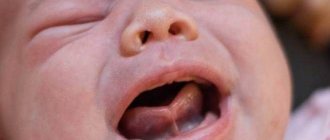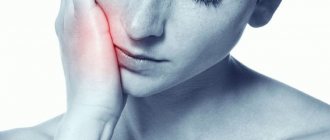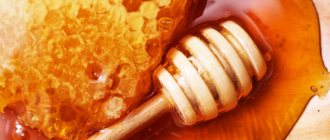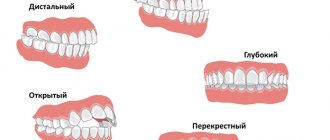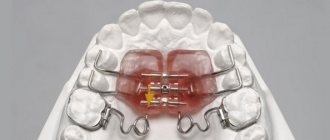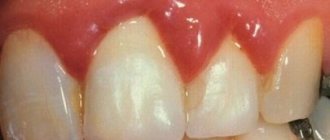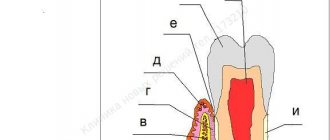7960
Orthodontic treatment does not always involve the use of special devices. In some situations, it is enough to use myogymnastics.
This option is an effective remedy for correcting abnormal bites , which has been proven by studies conducted over 50 years.
Exercises to normalize breathing function
Exercise No. 1 Full breathing. Take a long breath through your nose. During inhalation, the abdomen “inflates”, then the chest expands. When you exhale (through the nose), on the contrary, the volume of the chest first decreases, then the stomach retracts.
Exercise No. 2 Chest breathing. Exhale. Take a long breath through your nose. At this time, the chest expands and the stomach retracts. When you exhale (through the nose), the stomach retracts.
Exercise No. 3 Abdominal breathing. Exhale. Take a long breath through your nose. At this time, the stomach protrudes. When you exhale (through the nose), the stomach retracts.
Exercise No. 4 The skill of full, extended exhalation. Walk at an average pace. Inhale and exhale only through the nose. Inhale for three steps, exhale for four steps. After three to four days, the duration of exhalation should be increased by one count (5,6, etc.)
Exercise No. 5 Inhale and exhale alternately through one nostril (press the second nostril tightly with your finger).
What does efficiency depend on?
To maximize the effect of exercise, you need to consider some factors :
- gymnastics must be carried out efficiently : contract muscles as much as possible and constantly increase the number of exercises;
- if possible use additional devices to increase the load on the muscular system;
- carry out systematically at the same time;
- a set of exercises should only be selected by an orthodontist .
After using myotherapy in patients of the same age with the same diagnosis, the result is often completely different. Most often this happens due to non-compliance with recommendations and lack of consistency.
Exercises to train the muscles of the tongue and normalize the type of swallowing
Exercise No. 1 “Clock”. The mouth is open, the tongue makes slow circular movements along the upper lip, then along the lower lip.
Exercise No. 2 “Punish the naughty tongue.” Place your tongue on your lower lip and slap it with your upper lip “na-na.”
Exercise No. 3 “We will paint the ceiling.” It's time to paint the rooms, they invited a molar, he comes to the old house with a new brush and bucket. Your tongues are a brush, your hard palate is the ceiling...
Exercise No. 4 Depict the operation of a jackhammer. DDDD...
Exercise No. 5 “Riders”. Sit astride a chair and, opening your mouth wide, click your tongue.
Bottom line
Myogymnastics is an effective method for correcting dental anomalies. It can be used as an independent treatment, in combination with hardware treatment and as a prophylactic agent. Until the child’s baby teeth are replaced by permanent teeth, the issue of myotherapy needs to be resolved.
After a full course of gymnastic exercises, the chewing function is restored, the tone of the facial muscles is normalized, and the lower jaw becomes more mobile. In addition to restoring the functionality of the maxillofacial region, diction is corrected and articulation becomes clearer.
Remember that a set of exercises should be selected by an orthodontist based on the diagnosis of the child’s oral cavity. It is not recommended to work with your baby on your own.
Sources used:
- Anikienko, A.A. Hardware orthodontic treatment and its subordination to the physiological laws of irritation / A.A. Anikienko, N.V. Pankratova, L.S. Persin. — M.: Medical Information Agency
- Andreishchev, A.R. Combined dentofacial anomalies and deformities / A.R. Andreischev. — M.: GEOTAR-Media
- Kalamkarov, Kh. A. Orthopedic treatment of pathological abrasion of hard dental tissues / Kh.A. Kalamkarov. — M.: Medicine
Exercises to normalize breathing function
Exercise No. 1 Full breathing. Take a long breath through your nose. During inhalation, the abdomen “inflates”, then the chest expands. When you exhale (through the nose), on the contrary, the volume of the chest first decreases, then the stomach retracts.
Exercise No. 2 Chest breathing. Exhale. Take a long breath through your nose. At this time, the chest expands and the stomach retracts. When you exhale (through the nose), the stomach retracts.
Exercise No. 3 Abdominal breathing. Exhale. Take a long breath through your nose. At this time, the stomach protrudes. When you exhale (through the nose), the stomach retracts.
Exercise No. 4 The skill of full, extended exhalation. Walk at an average pace. Inhale and exhale only through the nose. Inhale for three steps, exhale for four steps. After three to four days, the duration of exhalation should be increased by one count (5,6, etc.)
Exercise No. 5 Inhale and exhale alternately through one nostril (press the second nostril tightly with your finger).
Exercise No. 6 Exhale. Pinch your nose with your fingers. Slowly count out loud to 5, then take a deep breath and exhale through your nose.
Exercises to strengthen the pharyngeal muscles
Exercise No. 1 Alternately tilt your head back as much as possible, leaning forward.
Exercise No. 2 Throw your head back. In this position, alternately tilt your head towards the right and left shoulder.
Exercise No. 3 Throw your head back, in this position alternately turn your head, without releasing your chin, to the right, then to the left.
Advantages and disadvantages of the method
The main advantage of this technique is that the adjustment can be carried out without the use of orthodontic appliances. Thanks to this, the child does not experience psychological or physical discomfort.
This eliminates injury to mucous membranes and damage to dental tissue .
The disadvantages of myotherapy include:
- duration of treatment;
- low efficiency in relation to pronounced anomalies;
- in the absence of consistency, regression quickly occurs.
Exercises to normalize the function of lip closure
Exercise No. 1 Pull your lips forward, close them, draw a tube, and stretch them wide.
Exercise No. 2 Pull your lips forward, close them, depict a mouthpiece, a proboscis.
Exercise No. 3 Close your lips, puff out your cheeks, slowly squeeze the air through your clenched lips with your fists.
Exercise No. 4 Close your lips, then move them alternately to the right and left.
Exercise No. 5 Close your lips, blow air under your upper lip, then under your lower lip.
Exercise No. 6 Place bent little fingers in the corners of the mouth, do not close your lips, spread your fingers slightly to the sides, close your lips.
Exercise No. 7 Blow out a stream of air with force (“a breeze is blowing,” let’s put out the candle,” “let’s make a storm,” etc.).
Exercises to train the muscles of the tongue and normalize the type of swallowing
Exercise No. 1 “Clock”. The mouth is open, the tongue makes slow circular movements along the upper lip, then along the lower lip.
Exercise No. 2 “Punish the naughty tongue.” Place your tongue on your lower lip and slap it with your upper lip “na-na.”
Exercise No. 3 “We will paint the ceiling.” It's time to paint the rooms, they invited a molar, he comes to the old house with a new brush and bucket. Your tongues are a brush, your hard palate is the ceiling...
Exercise No. 4 Depict the operation of a jackhammer. DDDD...
Exercise No. 5 “Riders”. Sit astride the toilet seat and, opening your mouth wide, click your tongue.
Exercise No. 6 Lift the tongue up, press it to the front part of the hard palate in the area of the palatine folds. Clench your teeth, swallow saliva, fixing the position of your tongue.
Exercise No. 7 Raise the tip of the tongue up and place it at the anterior part of the hard palate. Move the tongue along the arch of the hard palate as far back as possible to the soft palate.
Exercise No. 8 Raise the tip of the tongue up and place it at the anterior part of the hard palate. Move your tongue along the palatal surface of the teeth on the right and left, touching each tooth.
Rogers technique
The first methodological developments for correcting orthodontic defects of the dental system were proposed by the American dentist A. Rogers. According to his recommendations, the exercises should be performed as follows:
- muscles should contract as widely as possible;
- the intensity of contractions should not exceed the natural load;
- exercises must be performed on a regular basis;
- movements should not be sharp or intermittent, but smooth and slow;
- exercises should be repeated until slight (local) fatigue appears;
- Myogymnastics can be done with children aged 4 years and older.
The rules that Alfred Rogers proposed to take as a basis are still relevant today. Based on these rules, modern orthodontists create their own sets of exercises for the correction of dentofacial pathologies.
Exercises to normalize breathing function
Exercise No. 1 Full breathing. Take a long breath through your nose. During inhalation, the abdomen “inflates”, then the chest expands. When you exhale (through the nose), on the contrary, the volume of the chest first decreases, then the stomach retracts.
Exercise No. 2 Chest breathing. Exhale. Take a long breath through your nose. At this time, the chest expands and the stomach retracts. When you exhale (through the nose), the stomach retracts.
Exercise No. 3 Abdominal breathing. Exhale. Take a long breath through your nose. At this time, the stomach protrudes. When you exhale (through the nose), the stomach retracts.
Exercise No. 4 The skill of full, extended exhalation. Walk at an average pace. Inhale and exhale only through the nose. Inhale for three steps, exhale for four steps. After three to four days, the duration of exhalation should be increased by one count (5,6, etc.)
Exercise No. 5 Inhale and exhale alternately through one nostril (press the second nostril tightly with your finger).
General rules
Regardless of which complex was shown to the patient, the exercises should be performed taking into account the general rules :
- Gymnastics begins with easy exercises and gradually moves on to more complex ones.
- When contracting, the muscles must move with the maximum permissible amplitude.
- When performing, it is necessary to gradually increase the speed of contractions. In this case, there should be a pause between them corresponding to the time of contraction.
- Exercises are carried out in accordance with the doctor’s instructions or until slight fatigue appears.
How myogymnastics is performed, watch the video:
Additional special exercises
Exercise No. 1. Slowly push the lower jaw forward until the cutting edges of the lower incisors are positioned in front of the upper ones. Hold the lower jaw in this position for 10 seconds, then slowly return to its original position.
Exercise No. 2. Perform the same exercise with a spank of the head, first to the right, then to the left. The load increases when performing the exercise while standing. The head is slightly tilted back, the lower jaw is slowly pushed forward until the lower incisors are positioned in front of the upper ones.
Exercise No. 3 (with the vestibular plate). The vestibular plate is placed in the vestibule of the oral cavity, with 1 finger of the right hand it is pulled forward by the ring and held with pursed lips.
Exercise No. 4. Place a folded strip of paper between your lips and purse your lips. The paper is held for up to 30-50 minutes during quiet games, drawing, reading, or when the child is watching TV.
Exercise No. 5. Perform the previous exercise, replace the strip of paper with a metal disk with a diameter of 2.5-3 cm, a thickness of 1.5 mm and a mass of about 6.5 g. The disk clamped between the lips should be positioned horizontally, it is necessary to ensure that the disk is only clamped lips, not teeth. The exercise is performed until fatigue (from 30 seconds to several minutes).
Exercise No. 6 (with a plastic plate). The child presses the edge of the plate, 1-2 mm thick and 30-35 mm wide, with his lips. 60-120 mm long. and holds it in a horizontal position. Some kind of weight is placed on the plate. Increasing the load causes increased clenching of the lips.
Exercise No. 7. Small cotton rolls are placed in the area of the transitional fold of the vestibule of the oral cavity on both sides of the frenulum of the upper lip. Close your lips and pronounce a series of phrases containing labial sounds (“b”, “m”, “p”).
Preparation for training - what will you need?
It is advisable to perform the workout every other day so that the result is visible, but it can also be performed 2-3 times a week. The main thing is the system.
You don’t need any special conditions or equipment for the classes; almost all exercises can be done using your hands.
It is best to wash your hands before training, as touching your face and lips with dirty hands is not a good idea.
If the exercises are performed by a child , then they can be made more interesting with the help of games. For example, you can invite your child to blow on a feather, or use soap bubbles. When the child blows them, the orbicularis oris muscle will work.
But for some exercises you will still need equipment: buttons, a ruler, cotton swabs, a pinwheel and a mirror. In general, all this is in every home, and you don’t need to worry too much.
The goal of any girl is to tighten all the muscles of the face, and especially the circular muscles. How can this be achieved? Systematic exercise and proper nutrition are the key to success.
Exercises to normalize breathing function
Exercise No. 1 Full breathing. Take a long breath through your nose. During inhalation, the abdomen “inflates”, then the chest expands. When you exhale (through the nose), on the contrary, the volume of the chest first decreases, then the stomach retracts.
Exercise No. 2 Chest breathing. Exhale. Take a long breath through your nose. At this time, the chest expands and the stomach retracts. When you exhale (through the nose), the stomach retracts.
Exercise No. 3 Abdominal breathing. Exhale. Take a long breath through your nose. At this time, the stomach protrudes. When you exhale (through the nose), the stomach retracts.
Exercise No. 4 The skill of full, extended exhalation. Walk at an average pace. Inhale and exhale only through the nose. Inhale for three steps, exhale for four steps. After three to four days, the duration of exhalation should be increased by one count (5,6, etc.)
Exercise No. 5 inhale and exhale alternately through one nostril (press the second nostril tightly with your finger).
Exercises to train the muscles of the tongue and normalize the type of swallowing
Exercise No. 1 “Clock”. The mouth is open, the tongue makes slow circular movements along the upper lip, then along the lower lip.
Exercise No. 2 “Punish the naughty tongue.” Place your tongue on your lower lip and slap it with your upper lip “na-na.”
Exercise No. 3 “We will paint the ceiling.” It's time to paint the rooms, they invited a molar, he comes to the old house with a new brush and bucket. Your tongues are a brush, your hard palate is the ceiling...
Exercise No. 4 Depict the operation of a jackhammer. DDDD...
Exercise No. 5 “Riders”. Sit astride a chair and, opening your mouth wide, click your tongue.
Additional special exercises
Exercise No. 1. Use the tip of your tongue to press on the palatal surfaces of the upper front teeth until the muscles are tired (3-5 minutes).
Exercise No. 2. With the head thrown back, alternately open and close the mouth; when closing the mouth, try to reach the back edge of the hard palate with the tip of the tongue.
Exercise No. 3. Pinch your lower lip with your upper front teeth, hold it, then release it.
Exercise No. 4. Open your mouth, slowly close it, sweeping the lower jaw back and placing the front teeth in marginal closure. Hold the lower jaw in this position for 4-8 seconds.
Exercise No. 5 (with a wooden spatula). A spatula is placed between the teeth (its width is equal to the width of the upper incisors).
Bite the spatula so as to apply pressure on the palatal surfaces of the upper teeth and promote their deflection in the vestibular direction, and the lower incisors in the lingual direction.
Contraindications
You cannot practice myotherapy on your own, as this can result in unpleasant results. An orthodontist should prescribe gymnastics after checking the condition of the facial muscles. The patient will not be able to independently determine the degree of underdevelopment of the jaw muscles, cartilage and joints.
Contraindications:
- severe malocclusion (third degree and above);
- immobility of facial muscles;
- immobility of the jaw joints;
- jaw hypotrophy.
These serious pathologies require surgical correction or other forms of orthodontic intervention.
It is also necessary to take into account the duration of osteo-maxillary changes, which depends on the age of the patient. If the anomaly developed a long time ago and was fixed for quite a long time, the gymnastic complex will not help correct the defect. Therefore, an old dental defect is a contraindication when prescribing gymnastics.
The exercises should be performed on a regular basis to see the effect of using the technique. If you start doing it and quit, all the results achieved will disappear.

